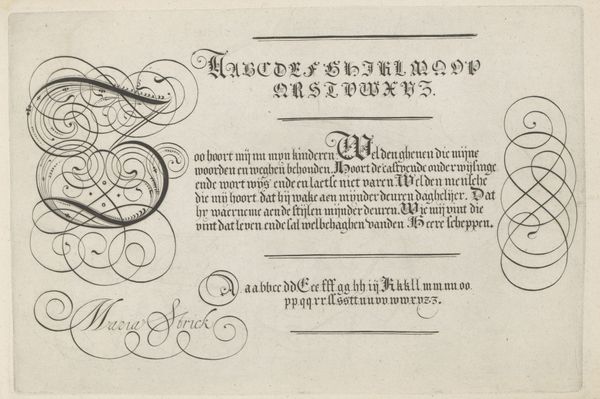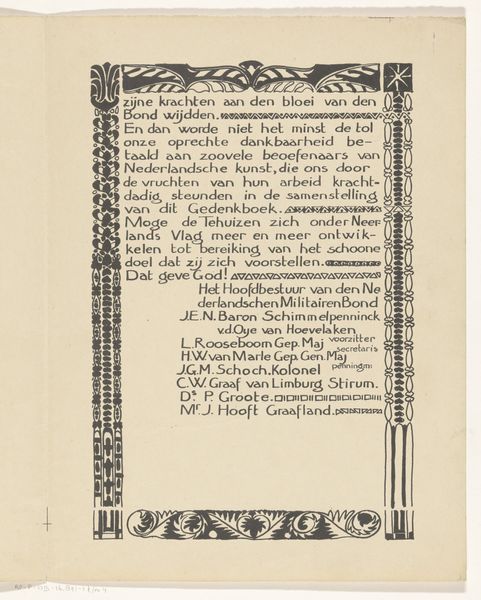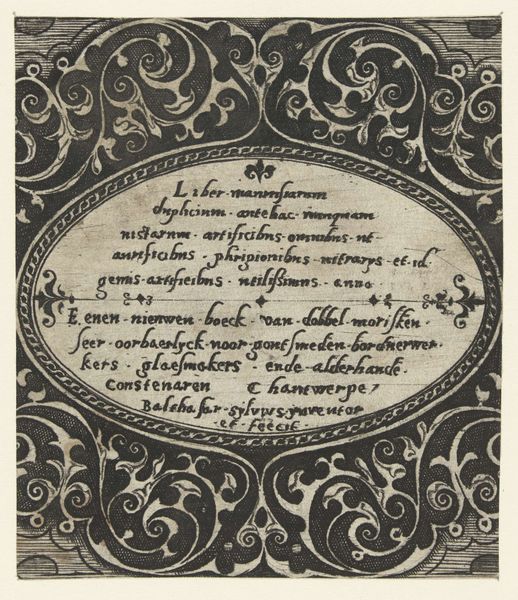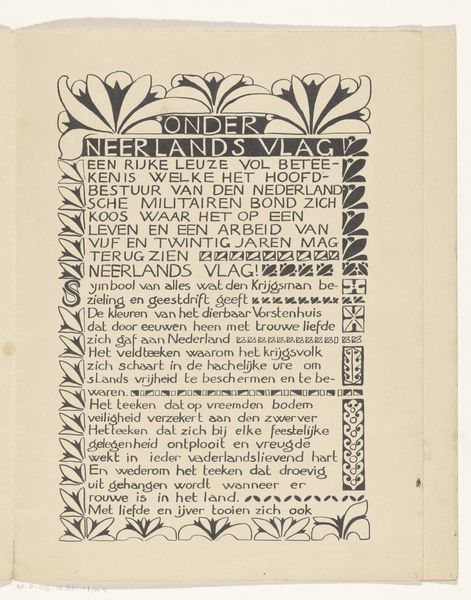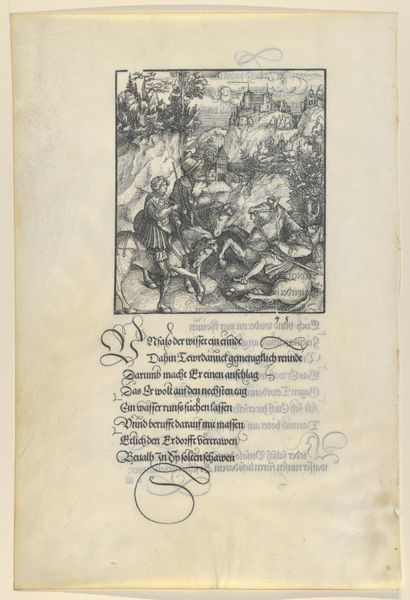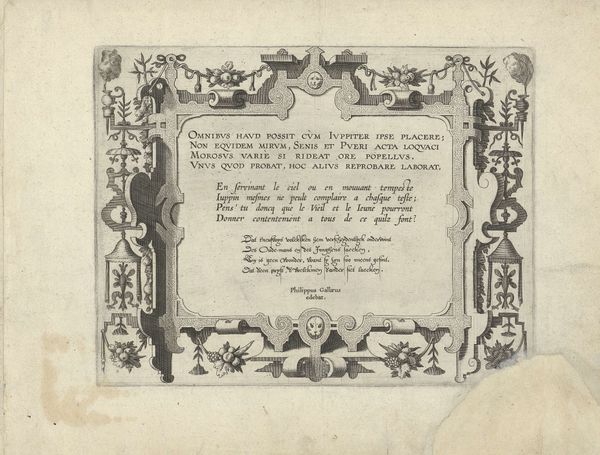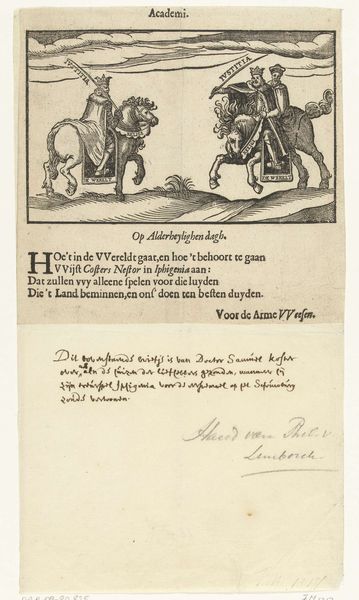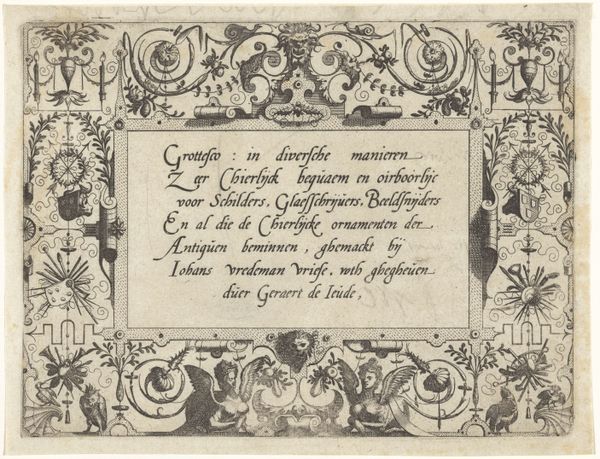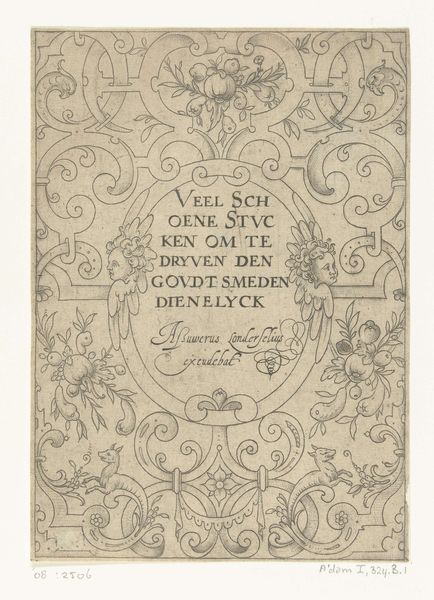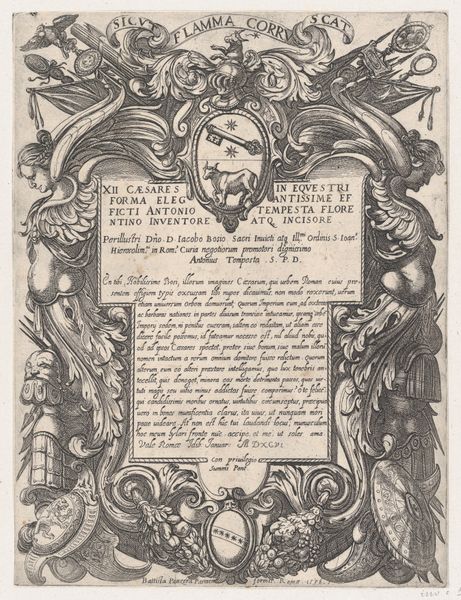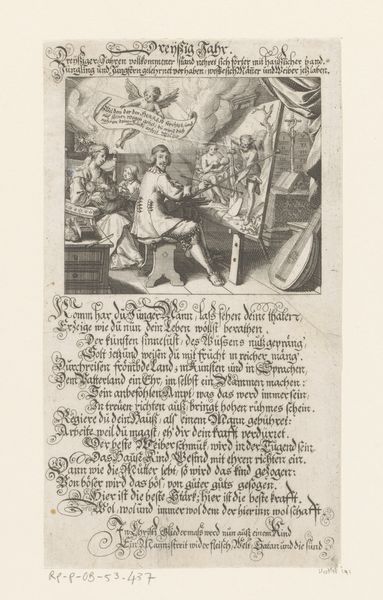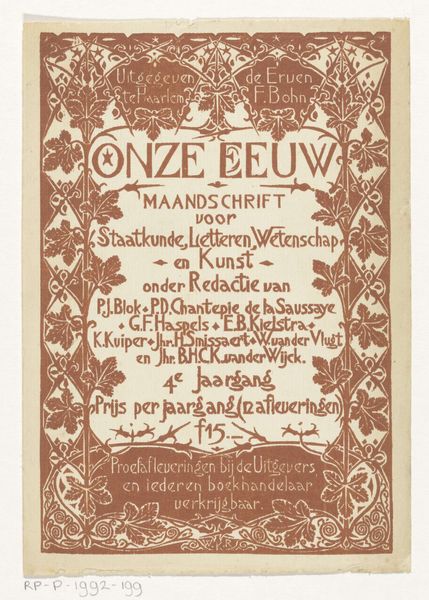
Dimensions: height 477 mm, width 366 mm
Copyright: Rijks Museum: Open Domain
Curator: Here we have "Sinterklaasgedicht met staf en speelgoed" – A Sinterklaas poem with staff and toys. It is attributed to Willem Pothast, made before 1912, employing ink drawing on paper. What is your initial take on this piece? Editor: Well, the stark contrast immediately strikes me. The fine, almost scratchy ink work gives the whole thing a raw, handcrafted feel. It’s not trying to be slick or polished; it feels incredibly tactile. Curator: Precisely. Consider the context: pre-World War I Europe, a time when mass production was on the rise, yet we still see this embrace of the handmade. The artist chose simple materials to represent a festive celebration of gift-giving. What do you think this selection implies? Editor: For me, it emphasizes accessibility and the handmade nature of the toys themselves. Toys then would've likely been crafted from wood and fabric and assembled laboriously by local artisan—materials and processes we still see traces of here in the printmaking technique. I wonder if Pothast is making a subtle comment about consumerism, even at that early stage? Curator: That's perceptive. Given the historical period, there's also a rising wave of nationalism and cultural pride. Representing a uniquely Dutch tradition, Sinterklaas, through a meticulously hand-drawn illustration elevates folk culture to an artistic subject. This blends religious history and class issues, especially in contrast to contemporary fine arts. Editor: And that decorative border! The ribbons, the detail on the Sinterklaas staff, the almost woodblock-print quality. Each area shows time and labour. There's this real connection between the process of creation and the values the image is promoting: tradition, community, and craftsmanship. Curator: Indeed. We might read this work as a visual argument. Pothast invites us to value the labour involved not just in making art, but in making meaningful cultural traditions that are the poem subject as well, contrasting with a growing preference for standardized commercial products. Editor: Looking at this piece has highlighted just how intertwined material processes are with social meaning and even, to some degree, resistance. Curator: It really illuminates how seemingly simple imagery reflects the cultural currents of its time.
Comments
No comments
Be the first to comment and join the conversation on the ultimate creative platform.
